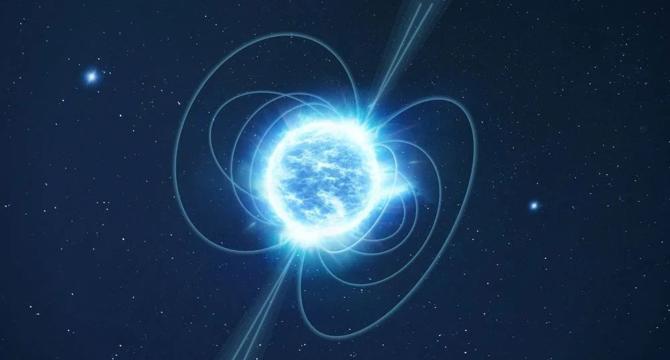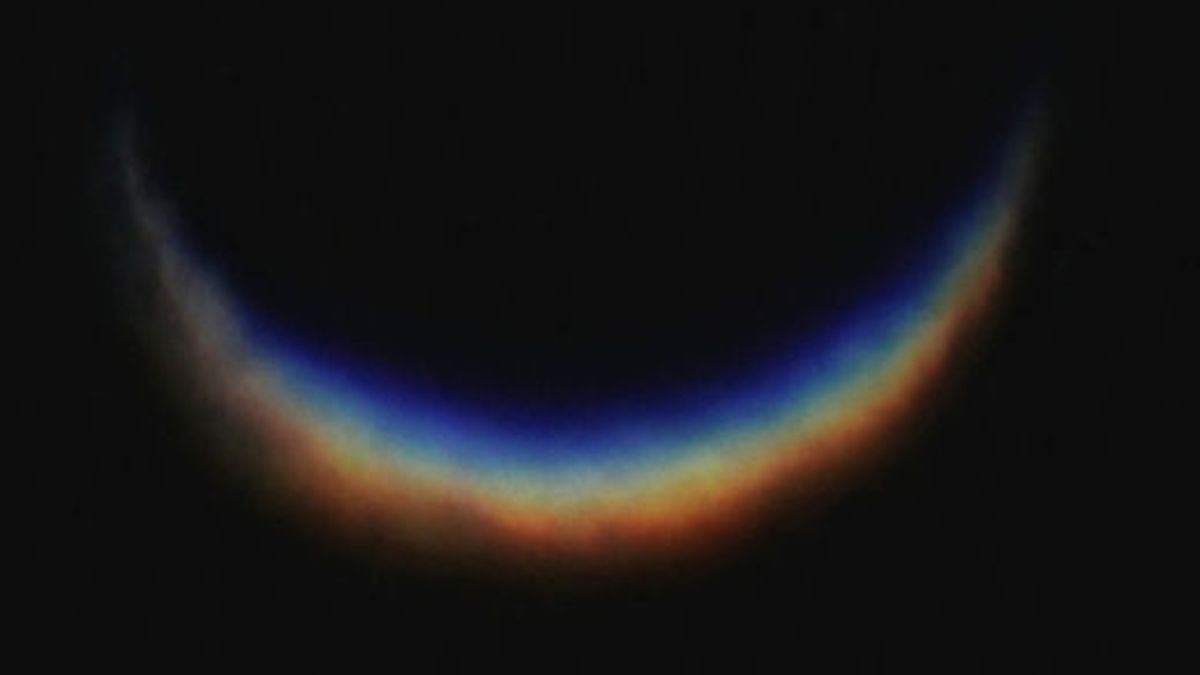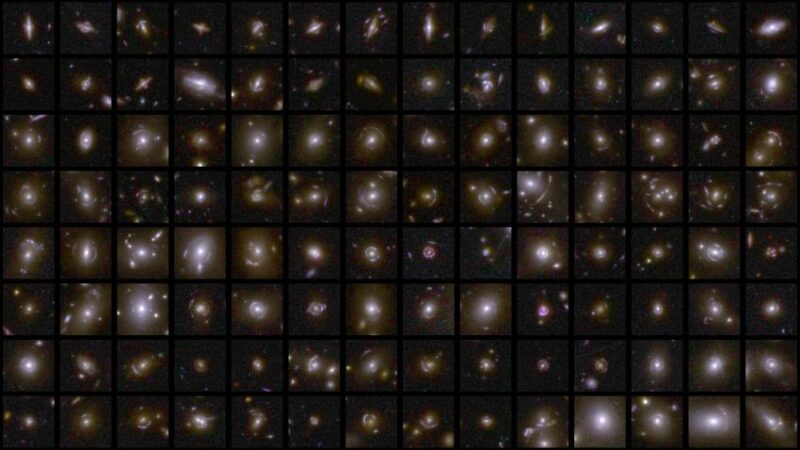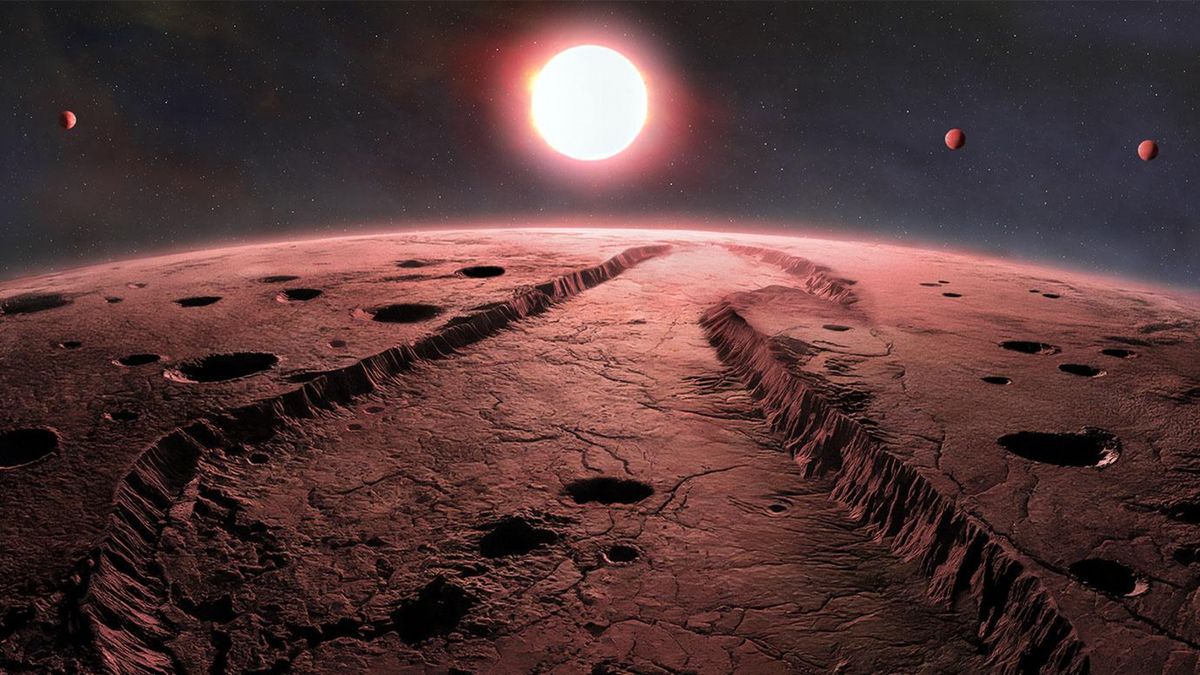Space News
Knowridge
4

Image Credit: Knowridge
Asteroid Donaldjohanson: A space rock that could rewrite history
- New research suggests that the asteroid (52246) Donaldjohanson formed about 150 million years ago when a much larger asteroid broke apart.
- On April 20, 2025, NASA’s Lucy spacecraft will fly by Donaldjohanson to collect data that could provide new insights into how asteroids form and change.
- Donaldjohanson is part of the Erigone asteroid family and is expected to be elongated and rotate slowly.
- The Lucy mission aims to uncover the history of the solar system by visiting 11 asteroids over 12 years, primarily focusing on the Trojan asteroids near Jupiter.
Read Full Article
Like
Knowridge
204

Image Credit: Knowridge
We finally know the mass of brand new neutron stars
- A team of researchers analyzed a sample of 90 neutron stars in binary relationships to measure the birth mass function (BMF) of neutron stars.
- The BMF of neutron stars plays a crucial role in understanding their formation in supernova explosions.
- Previous observations provided loose constraints on neutron star masses, but new research offers a more accurate power-law description of the BMF.
- The study involved classifying neutron stars as recycled or non-recycled based on their rotational speeds in binary relationships.
- Probabilistic corrections were applied to infer the initial masses of neutron stars at the time of their formation.
- The developed power-law distribution (PLD) model indicates a unimodal distribution of neutron star masses, peaking at 1.27 solar masses.
- The research sheds light on the link between the neutron star BMF and the initial mass function (IMF) of massive stars.
- Understanding neutron star birth masses is vital for interpreting gravitational wave detections from neutron star mergers.
- The study provides insights into supernova explosions, double star evolution, and matter properties under extreme conditions.
- The research enhances astrophysicists' understanding of neutron star formation history and its implications for various astrophysical phenomena.
Read Full Article
12 Likes
Earthsky
316

Image Credit: Earthsky
New data hints dark energy in the universe is evolving
- Scientists using the Dark Energy Spectroscopic Instrument (DESI) have found hints that dark energy in the universe changes over time.
- DESI helped create the largest 3D map of the universe, showing the influence of dark energy over the past 11 billion years.
- When combined with other measurements, there are indications that the impact of dark energy may be weakening over time, deviating from the standard cosmological model.
- The dataset from DESI, including data on 4 million stars, 13.1 million galaxies, and 1.6 million quasars, is now available to astronomers and the public.
Read Full Article
19 Likes
Guardian
267
Image Credit: Guardian
Dark energy: mysterious cosmic force appears to be weakening, say scientists
- Dark energy, the mysterious force powering the expansion of the universe, appears to be weakening, according to a survey.
- Results from the dark energy spectroscopic instrument (Desi) team at the Kitt Peak National Observatory suggest that dark energy reached a peak billions of years ago and is now about 10% weaker.
- If confirmed, these findings could challenge the widely accepted theoretical model of the universe and potentially lead to a big crunch scenario, where the expansion of the universe goes into reverse.
- The results, based on the most detailed three-dimensional map of the universe created by Desi, indicate that dark energy is declining rather than remaining constant.
Read Full Article
16 Likes
Discover more
Guardian
0
Image Credit: Guardian
Is dark energy destined to dominate the universe and lead to the ‘big crunch’?
- Scientists have discovered that dark energy, a mysterious force acting as anti-gravity, is currently dominating the cosmic tug of war between matter and itself, driving the expansion of the universe.
- A recent analysis by the Dark Energy Spectroscopic Instrument (Desi) suggests that dark energy peaked when the universe was about 70% of its current age and is now on the decline.
- This challenges the widely accepted theoretical model that assumes dark energy to be constant and predicts a 'big freeze' scenario in which distant regions recede too fast, leading to an isolated universe.
- If dark energy were to decline beyond zero and become negative, it could reverse the expansion, resulting in a potential 'big crunch', or the universe could have a quieter ending if dark energy settled at zero.
Read Full Article
Like
Medium
178

Image Credit: Medium
Discover How to Earn from the Booming eLearning Sector
- The eLearning market offers enormous potential for creating a secondary income stream.
- The demand for educational resources is high, with over 300 million active learners.
- AI-powered technology makes it easy to enter the eLearning market and generate high-quality educational content.
- Leveraging platforms like Amazon's Kindle Direct Publishing and self-publishing options can help reach a wider audience and earn substantial royalties.
Read Full Article
10 Likes
Medium
369

Image Credit: Medium
How I Built a $500 Daily Income with This Simple Tool
- The AMZ Money Machine is an innovative tool that helps users generate a daily income through Amazon Kindle publishing.
- Users have reported daily earnings of up to $547.93 and experienced an influx of $500 within a week of implementation.
- With no technical skills required, the AMZ Money Machine automates the process of finding and creating high-demand books.
- Lifetime access to the AMZ Money Machine is available for just $17, backed by a risk-free money-back guarantee.
Read Full Article
22 Likes
Mensjournal
138

New Special Edition Megahit Omega MoonSwatch Is a Must-Have
- Omega and Swatch Group are celebrating the 60th anniversary of their collaboration with the launch of the Bioceramic MoonSwatch 1965.
- The commemorative timepiece is made from a blend of ceramic and biosourced material, paying tribute to the Omega Speedmaster's flight qualification from NASA.
- The watch features a gray case, black bezel, and special counters displaying numbers 19 and 65, with markers and hands that glow in the dark.
- The Omega x Swatch Bioceramic MoonSwatch 1965 is priced at $270 and available for purchase at selected Swatch stores worldwide, with a limit of one watch per person, per day, and per store.
Read Full Article
8 Likes
Nasa
66

Image Credit: Nasa
New Bridge Ready to Serve NASA, America’s Space Interests
- The westbound portion of the NASA Causeway Bridge, which connects NASA Kennedy Space Center to the mainland, is now fully operational.
- The new bridge replaces the old two-lane drawbridge and is about 35% longer than its predecessor.
- With a 65-foot waterway clearance and a wider channel, the new bridge can accommodate larger vessels carrying cargo necessary for space launches.
- Funding for the bridge replacement and nearby road widening was provided by a $90 million federal infrastructure grant and contributions from NASA and the state of Florida.
Read Full Article
4 Likes
Livescience
352

Image Credit: Livescience
'Rainbow on fire': Venus transforms into colorful crescent as it approaches its closest point to Earth
- New photos reveal Venus transformed into a colorful crescent as it approaches its closest point to Earth.
- On March 23, Venus will reach its inferior conjunction when it lies directly between Earth and the sun.
- Particles in Earth's atmosphere refract different wavelengths of light, creating a rainbow-like effect on Venus.
- Venus became unusually bright and was part of a rare planetary parade in the night sky in recent weeks.
Read Full Article
21 Likes
Livescience
369

Image Credit: Livescience
NASA reveals a sunset on the moon in high definition for the 1st time
- NASA has released the first ever high-definition photographs of a sunset on the moon.
- The images were captured by the Blue Ghost lunar lander, which completed its maiden mission on the moon.
- The mission lasted for 14 days and collected extensive data on space weather and cosmic forces.
- The lander delivered 10 scientific and technological instruments to the moon's Mare Crisium basin.
Read Full Article
22 Likes
Nasa
436

Image Credit: Nasa
Welcome Home, Crew-9!
- NASA astronauts Butch Wilmore, Nick Hague, and Suni Williams, along with Roscosmos cosmonaut Aleksandr Gorbunov, have returned from a long-duration science expedition aboard the International Space Station.
- During their mission, Crew-9 contributed to a variety of scientific experiments and technology demonstrations, conducting over 150 unique investigations with more than 900 hours of research.
- Suni Williams now holds the record for the most spacewalking time by a female astronaut, with 62 hours and 6 minutes outside the station.
- The research included studies on plant growth, stem cell technology for blood diseases, autoimmune disorders, and cancers.
Read Full Article
26 Likes
Earthsky
173

Image Credit: Earthsky
New Euclid images reveal hidden gravitational lenses
- Euclid space telescope released its first batch of survey data, revealing 26 million galaxies and about 500 gravitational lens candidates.
- The mission aims to study dark matter and dark energy by surveying the night sky.
- The data release includes galaxy clusters, active galactic nuclei, quasars, and transient events.
- Euclid will observe each deep field multiple times during its six-year mission, promising many more discoveries.
Read Full Article
10 Likes
Livescience
53

Image Credit: Livescience
4 tiny, Earth-like planets found circling 2nd-closest star system to us — and could be visited by future human generations
- A new study has revealed four Earth-like planets orbiting Barnard's Star, making them potentially visitable by future generations using advanced rocket propulsion.
- These planets are rocky and close to their star, making them unlikely to support life due to their high temperatures.
- Initially, astronomers suspected a gas giant orbiting Barnard's Star due to its wobbling motion, but the study found four smaller rocky planets causing the gravitational pull instead.
- The planets are so close to Barnard's Star that they complete orbits in a matter of days, ruling out their habitability.
- Future advancements in rocket propulsion, like nuclear fusion engines or light sails, could enable humans to reach and colonize these planets in the future.
- The discovery was made using the MAROON-X instrument on the Gemini North telescope and confirmed by data from ESPRESSO on the Very Large Telescope.
- The findings challenge previous assumptions and indicate the potential abundance of small rocky planets around red dwarfs like Barnard's Star.
- Despite being uninhabitable, the discovery of these nearby worlds marks a significant step in our understanding of planetary systems in our cosmic neighborhood.
- The researchers expressed excitement about the discovery and the sense of eternal knowledge it brings to humanity.
- The study sheds light on the commonality of rocky planets around red dwarfs and the possibility of further exploration beyond our solar system.
Read Full Article
3 Likes
For uninterrupted reading, download the app